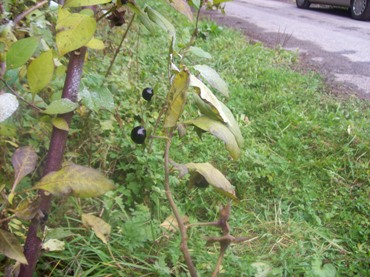Habitat
© Louis Baijot 2008
Atropa belladonna is native to Central and Southern Europe, as well as some parts of Asia. It is cultivated for medicinal use in France, Great Britain, and North America, especially in the western and northeastern parts of the United States. It is found most commonly in open woods or woodland clearings, and preferably in places with calcareous soil.
For its gestation period, Deadly Nightshade likes very moist environments, with lots of exposure to sunlight. When it is a full fledged sporophyte, the plant prefers moist soil, and medium shade, although it can grow in full shade or no shade as well.
Atropa belladonna doesn't really have a preference as far as soil pH - it can grow in acidic, neutral, or basic soil. It will also grow in sandy, stony, or loamy soil. However, it is found most often in soil with a pH of 6 or below (meaning it's acidic). Research has shown that the plant grows the highest amount of the alkaloids we use for medicines when it is grown in light, chalky soil with lots of exposure to the sun.
Deadly Nightshade follows a perennial growth cycle, flowering between June and September every year.
Click here to read
about Adaptations of Deadly Nightshade,
or click here to go back to the Home page.